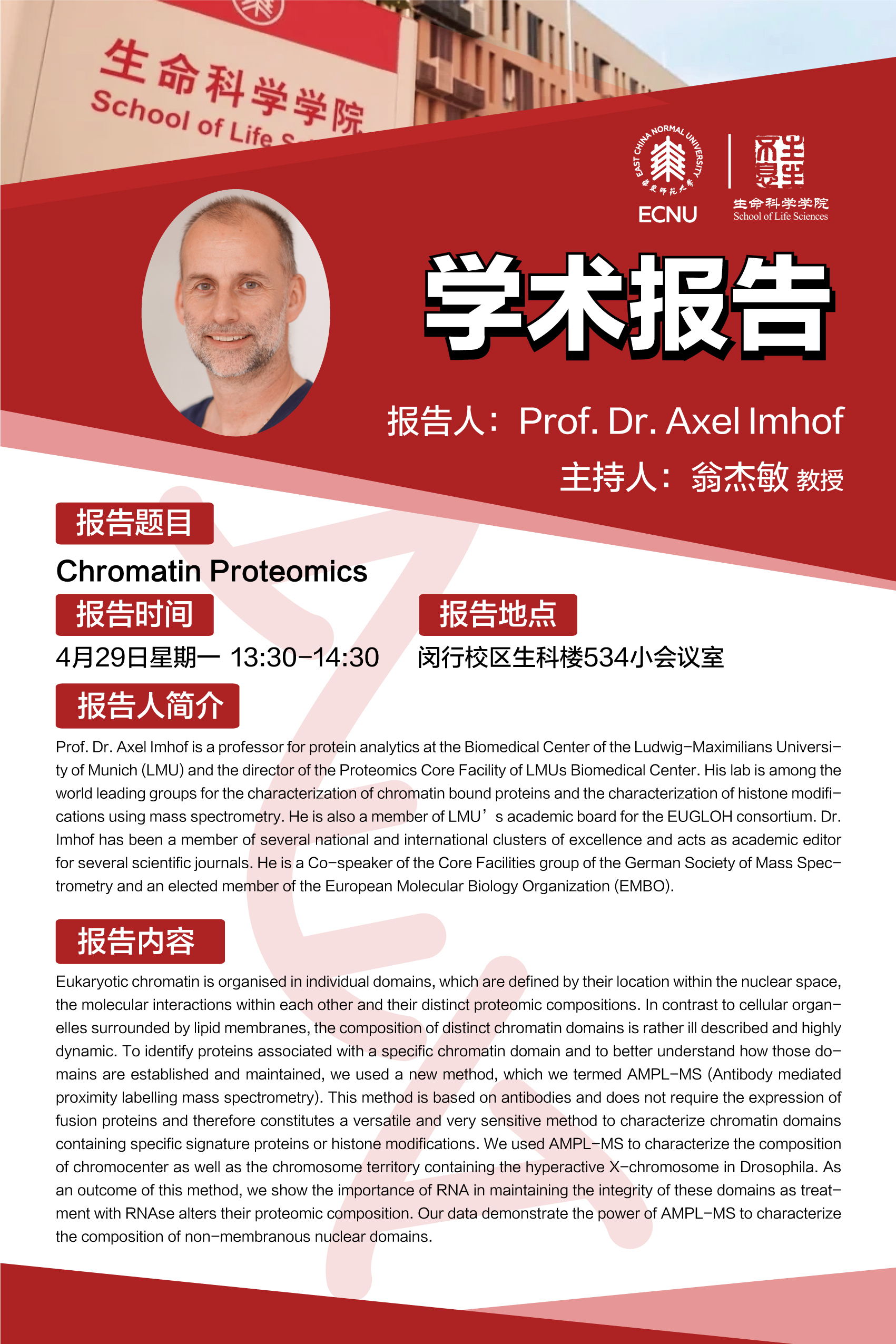



报告题目:Chromatin Proteomics
报 告 人:Axel Imhof, LMU Munich
主 持 人:翁杰敏 教授
报告时间:2024年4月29日下午1:30-2:30
报告地点:闵行校区生科楼534小会议室
报告人简介
Prof. Dr. Axel Imhof is a professor for protein analytics at the Biomedical Center of the Ludwig-Maximilians University of Munich (LMU) and the director of the Proteomics Core Facility of LMUs Biomedical Center. His lab is among the world leading groups for the characterization of chromatin bound proteins and the characterization of histone modifications using mass spectrometry. He is also a member of LMU’s academic board for the EUGLOH consortium. Dr. Imhof has been a member of several national and international clusters of excellence and acts as academic editor for several scientific journals. He is a Co-speaker of the Core Facilities group of the German Society of Mass Spectrometry and an elected member of the European Molecular Biology Organization (EMBO).
报告内容:
Eukaryotic chromatin is organised in individual domains, which are defined by their location within the nuclear space, the molecular interactions within each other and their distinct proteomic compositions. In contrast to cellular organelles surrounded by lipid membranes, the composition of distinct chromatin domains is rather ill described and highly dynamic. To identify proteins associated with a specific chromatin domain and to better understand how those domains are established and maintained, we used a new method, which we termed AMPL-MS (Antibody mediated proximity labelling mass spectrometry). This method is based on antibodies and does not require the expression of fusion proteins and therefore constitutes a versatile and very sensitive method to characterize chromatin domains containing specific signature proteins or histone modifications. We used AMPL-MS to characterize the composition of chromocenter as well as the chromosome territory containing the hyperactive X-chromosome in Drosophila. Our data demonstrate the power of AMPL-MS to characterize the composition of non-membranous nuclear domains.
